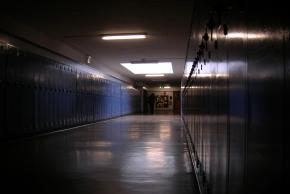A primer on education, not incarceration
, a teacher in the Seattle Public Schools and member of Educators, Students and Parents for a Better Vision of Seattle Schools, presents a lesson plan for opposing school closures.
A NEW chapter has been added to the American historical record.
By electing the first Black president in a country founded on slavery, millions of people rewrote the American history textbook, italicizing the word hope and underlining the phrase new direction. Deleted from the glossary of this new edition to American political consciousness: the entry for cynicism and the phrase "stay the course."
While a multitude of Seattleites helped pen this update to American political history, two major proposals from local officials seem to come from an outdated edition:
One: Mayor Greg Nickels has proposed the construction of a new municipal jail, projected to cost taxpayers over $200 million. Mayor Nickels' City of Seattle web page assures us that "Jails can have a positive economic impact; corrections officer positions pay well and have good benefits. The jobs associated with construction can also have a positive impact on the economy."
Two: Seattle schools Superintendent Maria Goodloe-Johnson has proposed the closure of between six to nine schools in the wake of a recently announced budget shortfall of some $37 million. These school closures would be in addition to the seven already shuttered in 2006. On January 29 the School Board will select those schools.

Unit Summary: It's now Seattle's proposed policy to build jails and close schools.
Critical Thinking Questions: Why, when the people of our country, state and city so clearly titled this new political era "Hope for Change," are Seattle's officials working on a chapter titled "Stay the Cynical Course"? Can you think of ways to keep our schools open and better ways to spur the economy than incarceration?
As you craft your answer, consider the following statistics:
The American Economic Review, one of the longest running journals in the field, released a study recently that showed, "A 1 percent increase in the high school completion rate of all men ages 20-60 would save the United States as much as $1.4 billion per year in reduced costs from crime incurred by victims and society at large."
Additionally, the Alliance for Excellent Education, a Washington, D.C.-based policy organization, calculated that if Washington State increased its graduation rates by 5 percent, the annual crime-related savings would be $50,235,943.
Under the Basic Education Act, passed by Washington's legislature in 1977, the state bears responsibility for fully funding K-12 education. Yet the level of funding for Washington's public schools has been below the national average for the past decade.
According to the Washington State Parent Teacher Association (PTA), because "the formula for funding the act hasn't changed substantially since 1977," but basic educational needs have, "it doesn't completely fund the Learning Assistance Program, school transportation, special education, and English language learners."
If Washington provided even the average state allocation of $8,973 per student, Seattle schools would receive an additional $70 million each year. That would turn the district's $37 million budget gap into a $33 million budget surplus!
With the state failing to fund a 21st-century definition of basic education, our local school district should join teachers, parents, and students to stand united in a demand for the funding it is owed.
By the district's own figures, the closure of nine schools will only save $3.6 million--nowhere near the tens of millions needed to meet the shortfall. Moreover, closing schools will only drive more students--and the state funding attached to each one--out of the district. As the Seattle Post-Intelligencer wrote of the last round of closures, "A new district analysis shows that, of 732 students at closed schools, only about half of the students went to the schools to which they were assigned. Another 155 left the district."
Recent school board meetings and school closure hearings have been packed with parents, teachers and students who say that shutting down schools is more than just mothballing a brick and mortar edifice--it's hanging a "closed" sign on the sports teams, after-school programs, school libraries and, above all, the hopes of communities.
At a city council meeting on October 27, several hundred people packed the chambers and an overflow viewing room for a public hearing on Mayor Greg Nickels' proposed budget--one that proposes cuts to social services while building a new jail. Not a single person testifying defended the building of the jail. The stickers worn by most of the crowd summed up the views of the majority of Seattle residents: "Invest in people first!"
Homework Assignment: With the people in your community, edit our elected officials' city planning manuscript to address the overemphasis on incarceration and the disregard of the public schools.
Fully funding our schools would be an investment with a high return both financially--from the money we save because of the lower demand for cellblocks--and morally, by supporting Seattle's youth.
Yes, we can, Seattle: fully fund education, keep schools open and both reduce class size and incarceration levels. This will take the kind of thinking that has rewritten the book on American consciousness.
First published in Real Change News.


